
Start with…
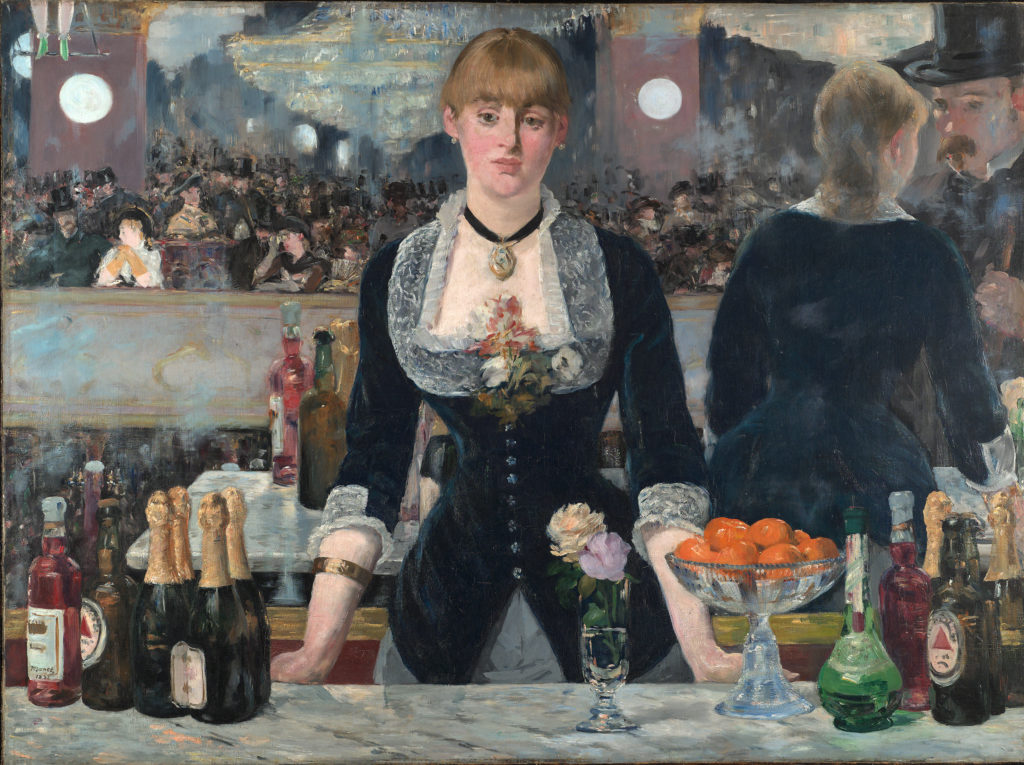
Spend 5 minutes thinking about all the comments or questions you can make about how Manet might have considered gender in the painting.
Make a note of these, and any other points or thoughts you have in relation to gender and art.
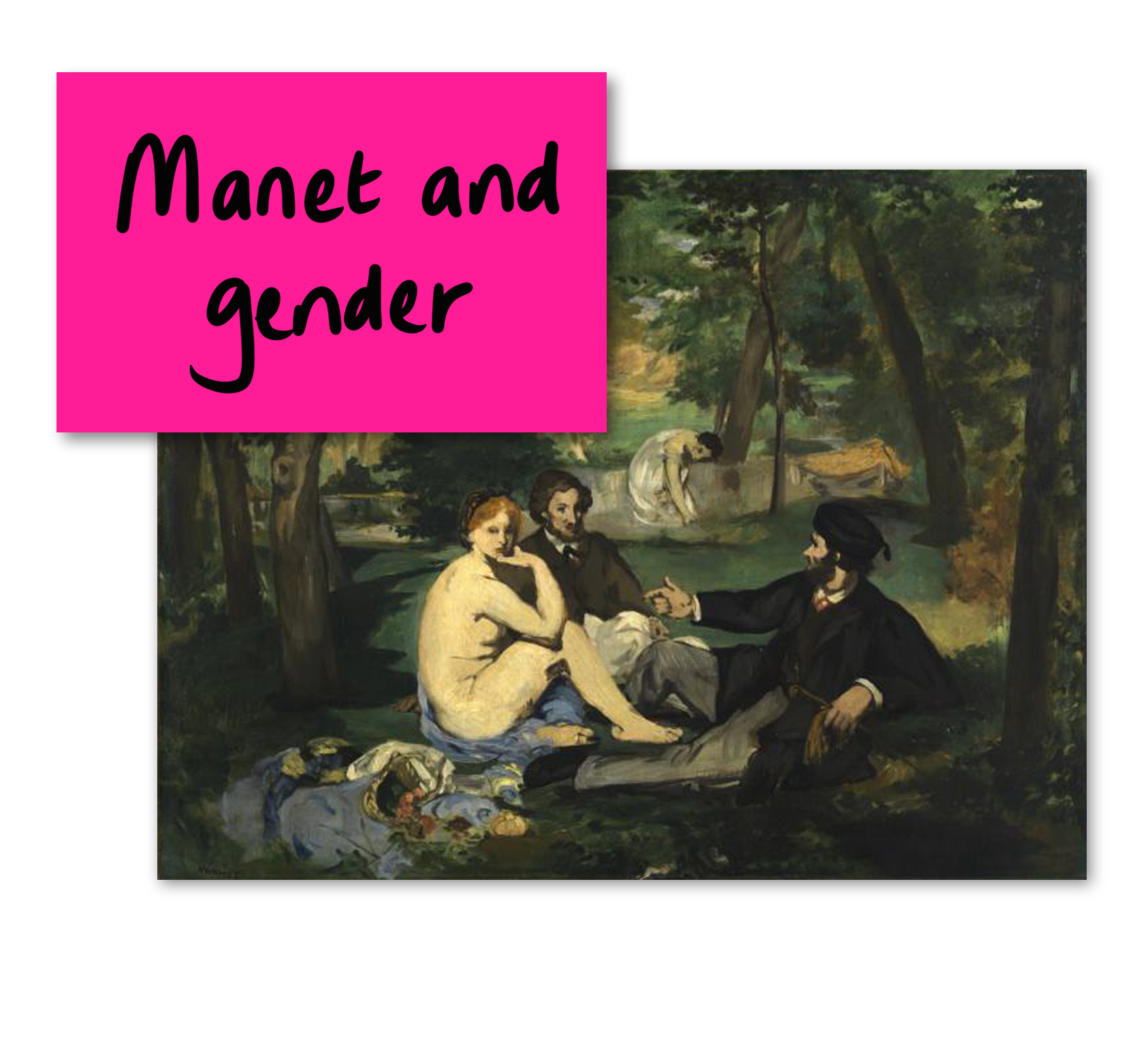
Manet and gender
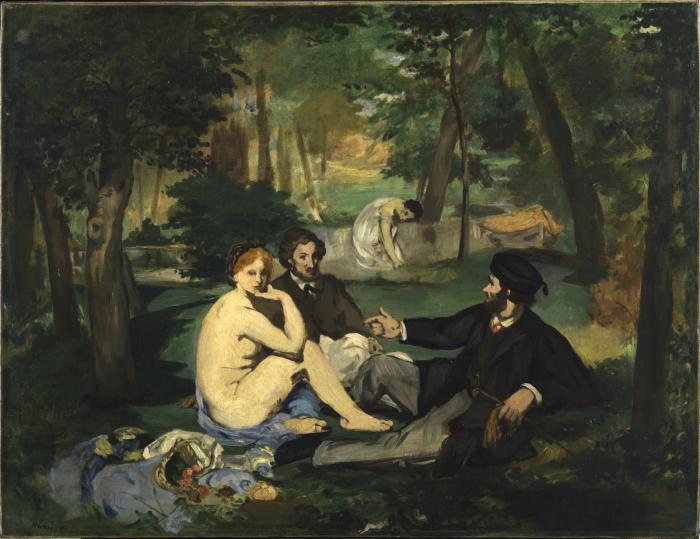
Paintings by Édouard Manet (1832-1883) remind us that the ideological separation of men/work and women/home was not necessarily a reality experienced by all members of society, especially the working classes. Women in his paintings often disrupt 19th century expectations about gender.
This example, Manet’s Déjeuner sur l’herbe (1863-8), was very controversial at the time because he appeared to rework the theme of a Renaissance painting with deliberate references to modern life and the relationships between men, women and the viewer. It was seen to be mocking what was considered ‘high’ art.
Image credit: Edouard Manet (1832 – 1883), Déjeuner sur l’herbe (1863-68)
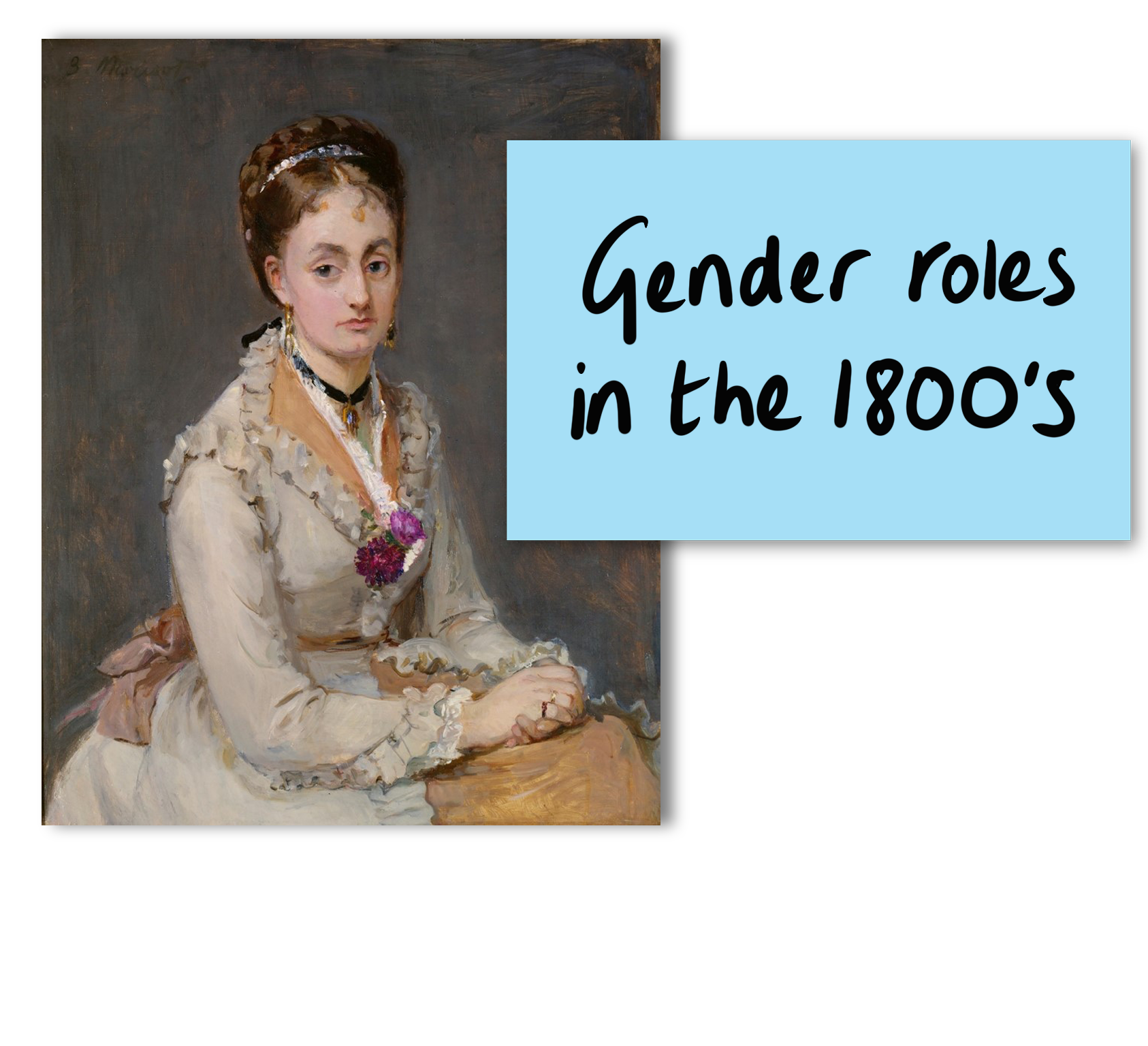
Gender roles in the 1800’s
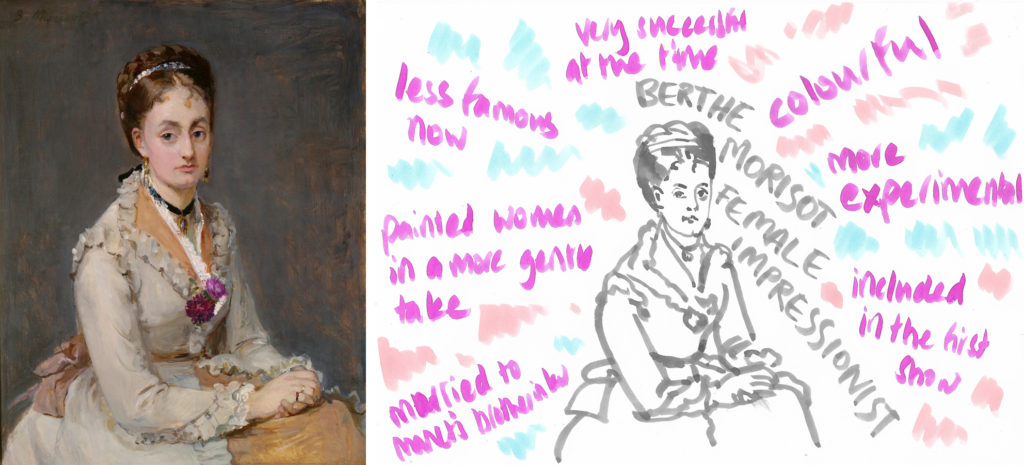
Gender roles became increasingly defined during the 19th century as cities industrialised and large numbers of men commuted to work, while women were left at home. Women were considered physically weaker than men so it was assumed they were better suited to domestic tasks. At the same time, they were regarded as morally superior and therefore the protectors of family values and respectability.
Artworks by Berthe Morisot (1841-1895) reveal the restrictions on middle class women of the time – her subjects were typically female friends and family members at home or in gardens. On the other hand, established prejudices made critics more accepting of her expressive brush marks and colourful style. These artistic qualities were typically gendered as female.
Image credits: Berthe Morisot (1841-1895), Portrait of a Woman, 1872-75, Illustrated notes by Toya Walker

Reflections
“I think the enigmatic facial expression seems relatable and timeless, as well as the sexual politics between the barmaid and the universal male propositioning her.” Mimi
“The flowers are both modest and drawing attention to her chest. Manet was interested in a lot of the contradictions around representations of women, perhaps even if he wasn’t a women’s rights champion.”
“It is interesting that one of Manet’s female contemporaries takes a much gentler and more intimate approach to painting women. Berthe Morisot was the only female artist present at the first Impressionist exhibition in 1874.” Lily

Discover more
Discover more artworks by Berthe Morisot (1841-1895), Pierre-Auguste Renoir (1841-1919) and Mary Cassatt (1844-1926) to see how other artists responded to expectations around gender at the time.

Discuss

Does the painting suggest that women were always subjects of the male gaze, or could women be active spectators too?
Do you think the Folies-Bergère (a music hall in the entertainment district of Paris) would have been considered a suitable place for a woman to work?
All we know about the barmaid who posed for Manet is that she was called Suzon. Do you think the painting can be considered a portrait?
Do you think a woman artist might have treated the subject differently? Why or why not?
Navigate by clicking the images above, or find a text version below.
Or go back to Themes to explore.
Start with:
Spend 5 minutes thinking about all the comments or questions you can make about how Manet might have considered gender in the painting. Make a note of these, and any other points or thoughts you have in relation to gender and art.
Manet and Gender:
Paintings by Édouard Manet (1832-1883) remind us that the ideological separation of men/work and women/home was not necessarily a reality experienced by all members of society, especially the working classes. Women in his paintings often disrupt 19th century expectations about gender.
This example, Manet’s Déjeuner sur l’herbe (1863-8), was very controversial at the time because he appeared to rework the theme of a Renaissance painting with deliberate references to modern life and the relationships between men, women and the viewer. It was seen to be mocking what was considered ‘high’ art.
Gender roles in the 1800’s:
Gender roles became increasingly defined during the 19th century as cities industrialised and large numbers of men commuted to work, while women were left at home. Women were considered physically weaker than men so it was assumed they were better suited to domestic tasks. At the same time, they were regarded as morally superior and therefore the protectors of family values and respectability.
Artworks by Berthe Morisot (1841-1895) reveal the restrictions on middle class women of the time – her subjects were typically female friends and family members at home or in gardens. On the other hand, established prejudices made critics more accepting of her expressive brush marks and colourful style. These artistic qualities were typically gendered as female.
Discuss:
- Does the painting suggest that women were always subjects of the male gaze, or could women be active spectators too?
- Do you think the Folies-Bergère (a music hall in the entertainment district of Paris) would have been considered a suitable place for a woman to work?
- All we know about the barmaid who posed for Manet is that she was called Suzon. Do you think the painting can be considered a portrait?
- Do you think a woman artist might have treated the subject differently? Why or why not?
Reflections:
“I think the enigmatic facial expression seems relatable and timeless, as well as the sexual politics between the barmaid and the universal male propositioning her.” Mimi
“The flowers are both modest and drawing attention to her chest. Manet was interested in a lot of the contradictions around representations of women, perhaps even if he wasn’t a women’s rights champion.” Karen
“It is interesting that one of Manet’s female contemporaries takes a much gentler and more intimate approach to painting women. Berthe Morisot was the only female artist present at the first Impressionist exhibition in 1874.” Lily
Discover more: Look at artworks by Berthe Morisot (1841-1895), Pierre-Auguste Renoir (1841-1919) and Mary Cassatt (1844-1926) to see how other artists responded to expectations around gender at the time.

